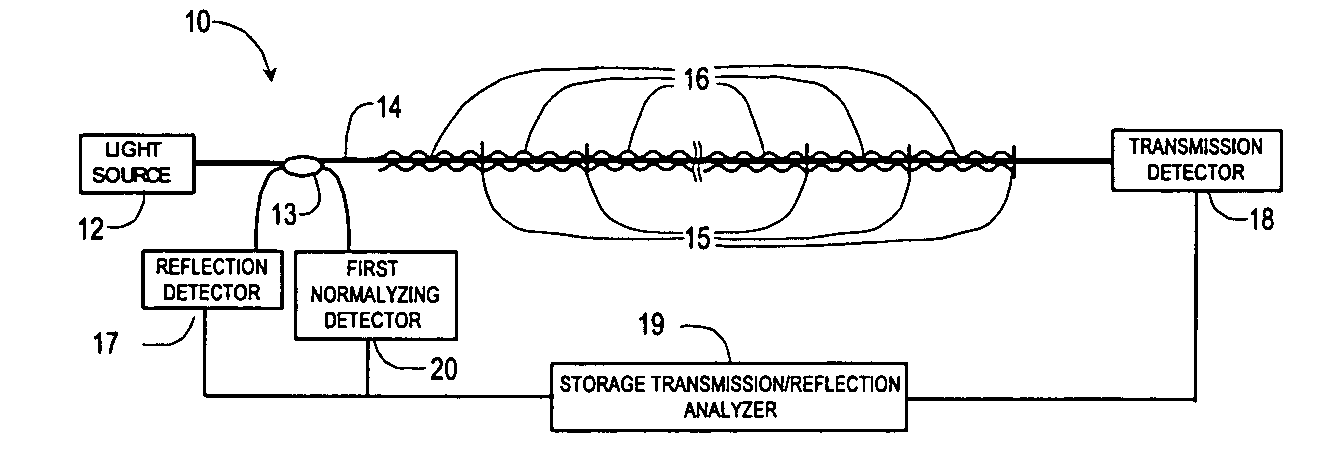Alarm condition distributed fiber optic sensor with storage transmission-reflection analyzer
a technology of transmission-reflection analyzer and fiber optic sensor, which is applied in the direction of fluid tightness measurement, force measurement by measuring optical property variation, instruments, etc., can solve the problems of inability to reverse the approach, inaccurate and limited fiber optic sensors, and optimal prior art fiber optic sensors
- Summary
- Abstract
- Description
- Claims
- Application Information
AI Technical Summary
Problems solved by technology
Method used
Image
Examples
Embodiment Construction
[0051] Reference will now be made in detail to the preferred embodiments of the invention, examples of which are illustrated in the accompanying drawings.
[0052] Referring to FIG. 1, the present invention comprises a distributed fiber optic sensor with storage transmission-reflection analyzer 10. The embodiment includes a light source 12 that may for example be a LED, laser or white light source, a test fiber 14, an optical transmission detector 17, and reflection detectors 18, which may, for example, be a photodiode. The light source 12 is operable to generate a light flux, which is launched into the test fiber 14 through the coupler 13.
[0053] The present invention can use standard telecommunication single or multimode silica or plastic fiber or any special light waveguide as said test fiber. The sensor is positioned along the structure to be monitored. The sensor 10 includes a plurality of loss-inducing members 16 characterized by a sensitivity to temperature, displacement, pressur...
PUM
| Property | Measurement | Unit |
|---|---|---|
| length | aaaaa | aaaaa |
| bending losses | aaaaa | aaaaa |
| wavelength | aaaaa | aaaaa |
Abstract
Description
Claims
Application Information
 Login to View More
Login to View More - R&D
- Intellectual Property
- Life Sciences
- Materials
- Tech Scout
- Unparalleled Data Quality
- Higher Quality Content
- 60% Fewer Hallucinations
Browse by: Latest US Patents, China's latest patents, Technical Efficacy Thesaurus, Application Domain, Technology Topic, Popular Technical Reports.
© 2025 PatSnap. All rights reserved.Legal|Privacy policy|Modern Slavery Act Transparency Statement|Sitemap|About US| Contact US: help@patsnap.com



